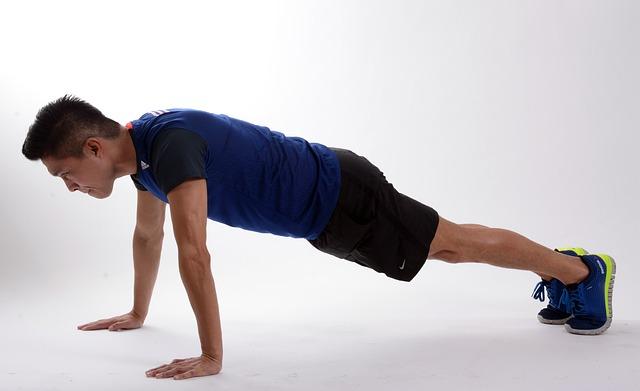Releasing Tight Neck Muscles at Home
^Hans the human is holding his head forward
Tight muscles that are holding your head forward
With forward head posture, we often see the muscles in the front of the neck become overextended, while those in the back are short and tight. This is a characteristic picture of muscular imbalance in the head, neck and shoulders and it sets up an unstable support for your head! Let’s focus on two sets of paired muscles that are frequently noted for their tightness in people who have FHP: the sub-occipitals and sternocleidomastoid.
- The sub-occipitals are located in the back of the head and connect the head to the top of the spine- these are small muscles with a direct connection to the spinal cord. Tightness in this region has the potential to create muscular dysfunction and pain.
- The sternocleidomastoid connects from the middle of the throat to behind the ear and is responsible for flexion of the neck, and is innervated by the accessory nerve. This muscle can be clearly seen when you rotate your head to the side.
The way to begin reversing forward head posture is by releasing tight neck muscles
The occipital release:
- Lie flat on your back
- Use a tennis ball or foam roller and place it under your neck, right at the base of the skull.
- Turn your head and roll over the different muscles for about 5 minutes.
Releasing the sternocleidomastoid
- Turn your head to the side and locate the muscle.
- Use your fingers to gently massage the muscles; don’t dig your fingers too deep
- Roll the muscle with your fingers
- Repeat on the other side.
These techniques should instigate a noticeable relief in tightness of the neck. After releasing the neck from tightness and improving your experience with pain, we can start strengthening the muscles that will help keep your head atop your spine where it belongs.
Dr. Randall Holmes, D.C.
Do You Have Forward Head Posture?
Forward Head Posture (FHP) is allegorical to our society’s constant looking to the future.
We are at a point in time where our technology, for all its insistence that it optimizes our health, can also do us a great deal of harm. FHP itself has been around for a long time, more commonly known as “reading neck,” but it is taking on a new importance today; computers of all sizes have our rapt attention throughout the day and FHP is a natural result of this interaction.
When our brains are so involved, the same thing happens as when you are in the midst of a stimulating conversation, you lean in. But instead of your whole body, it is just your head moving forward toward the screen. Now quantify the amount of time you spend engaged with a phone, tablet or laptop and you begin to see the scope of the problem
A matter of pressure on the neck
As your head inches forward, it is leaving its true center of gravity: studies suggest that the spine is put under pressure by another 10 pounds per inch your head leans forward. At our office in Houston, we often treat people who are carrying their heads between 2-3 inches forward of their spine. You can perform a simple check using a wall test to determine whether you may have FHP:
- Align your heels at shoulder width and press your buttocks against the wall.
- In this position, your shoulder blades should also be touching the wall.
- Is the back of your head touching the wall?
- If not, you most likely have FHP
However this is nothing to fear; many people today are walking around with their heads at least mildly forward.
How we help at Holmes Chiropractic
Carrying your head forward all the time is likely to cause damage to vertebrae and muscles, especially those of the neck. We approach FHP with a mix of postural analysis, chiropractic adjustment, targeted stretching and strengthening of the neck muscles and improvement of daily habits to effect a change in the way you carry your head!
Dr. Randall Holmes, D.C.
The Pillow Prop: Posture from the Bed
This is aimed at you, college students!
How many minutes have you spent tinkering with a pillow pile until it feels just right for you to lean back against the wall or headboard to watch a show in bed?
For many people, this defines the penultimate phase of their day: struggling to find comfort to watch a show or read until you fall asleep. Unfortunately, trying to read, write or conduct work from the computer in bed is one of the most ruinous things you can do for posture and your body. Nothing about it sets you up for success (unless you have an ergonomic set-up)- there is no real support and very few positions lend themselves to comfort without stressing the back.
The pillow propping game
Picture yourself, pinned against the wall with a few pillows to support your lower back and a clear picture emerges of:
- Poor curvature and an imbalanced spinal column.
- Your neck bent at an aggressive angle
- No lumbar support
- Pain
But people will persist with this because bed is comfortable. So whether you are working from bed regularly or just trying to find comfort for recreation, keep a few tips in mind.
Let’s make this a little less painful: these tips will help prevent many of the bad effects inherent in the half-reclined, half-propped position that we seek.
- Use a pillow to prop your computer, keeping the monitor at eye level, and avoid over-flexing your neck.
- Put a pillow under your legs and behind the lumbar to create something approaching neutral posture.
- Stop using your bed for working! The bed is no replacement for an office chair and your brain will start to associate bed with work (and worse, pain!).
Above all, listen to your body. Get up regularly to break the monotony of sitting in your bed and stretch if you feel tightness occurring.
Dr. Randall Holmes, D.C.
Strategic Snacking for Balancing Blood Sugar
Is this your idea of a quick snack?
Sugar is fuel
And for all intents and purposes, carbohydrates are sugar! When the body is fed glucose through food, it signals for insulin to be released which helps cells in the uptake and absorption of glucose; this glucose is then used to power your cells and contributes to a noticeable boost in energy and performance. But here’s the catch: it’s a balancing act.
- Low blood sugar: when blood sugar levels dip below normal, symptoms such as shakiness and light-headedness set it. This is that “hangry” feeling that most of us are familiar with.
- A “sugar crash:” on the opposite end of the spectrum, consuming an excessive amount of carbs spikes blood sugar levels and causes a rapid release of insulin and rapid uptake of glucose. The end result: an extreme feeling of fatigue; the dreaded sugar crash.
Energy levels are primarily determined by food
We can see that we need sugar in the right amount so how do we stay balanced? We want to focus on consuming the carbs your body needs for fuel, along with protein and healthy fats to keep us sustained. If we can do it naturally, then all the better.
- Avoid refined sugars and saturated fats
- Create a healthy blend of carbohydrate, protein and fat.
- 150-200 calories
Snacks are a useful way to keep blood sugar from dipping low in between meals. Here are some wholesome snack ideas:
- Peanut butter and banana
- Quinoa
- Trail mix
- Yogurt and granola
Food is medicine and it can be made portable! At Holmes Chiropractic, we want to help you redefine, “simple eating,” to move away from processed snacks and into something more wholesome. We think it will change the way you feel throughout the day.
Dr. Randall Holmes, D.C.
To Skip or not To Skip: The Breakfast Question
Breakfast is important for busy people
You woke up late and rushed out the door without grabbing a bite- it takes a minute to microwave oatmeal and that’s a minute you don’t have. There is a lot of misinformation on the internet regarding the importance of breakfast and it is always important to remember that everyone is unique- some people find that it makes no difference whether they eat breakfast or not. In any case, simply telling people to eat breakfast without giving them advice on how much and what type of food is counterproductive.
Is any breakfast better than no breakfast?
For a busy person, the answer is probably yes. Skipping breakfast altogether leaves you short in a few critical ways:
- Metabolism: avoiding breakfast causes your metabolism to slow, meaning you burn less calories throughout the day.
- Blood sugar: your blood needs glucose levels to be restored after a night of fasting.
- Stress hormones: in particular cortisol, is at its highest point in the morning and breakfast goes a long way lowering its presence.
This is before we get into the murky debate over whether skipping breakfast actually causes weight gain as opposed to weight loss. If you need to be productive between the hours of 9 and 12, it is beneficial to have breakfast. But what if you miss it and your only option is a doughnut in the office? While it is less than ideal, a doughnut still has the very bare essentials needed to spark your brain and stir your body, which many people will take over feeling tired while trying to start a day of work.
What constitutes a “good breakfast?”
Here are a few guidelines to keep in mind when considering breakfast, whether from the drive-thru or at home.
- 300-500 calories
- Consumed within 1-2 hours of waking
- with a mix of protein and good fats
A breakfast with this mix, something like egg and avocado on toast will stabilize blood sugar levels and keep you satiated the longest. Breakfast is important, but so is eating healthy at all points in the day. At Holmes Chiropractic, we know that diet is one of the most important elements of a lifestyle that keeps pain at bay and a smile on your face.
Dr. Randall Holmes, D.C.
Binge! Incorporating Exercise into Your Netflix Habit
Fitting exercise into your busy daily schedule may mean embracing the 21st century
A novel idea- that you could use the timing of a television show to work out incrementally. Most health professionals will recommend that you get at least 2.5 hours of exercise/week and that is on the low end. What they don’t say is that this can be broken up any way you like- 2 minute quick bursts, 10 minute yoga routines or a longer, fuller work out. The important part is that you get the body moving, for the benefit of your brain, bones and body!
Commercial break workouts integrate with your favorite television show.
That is, assuming you are watching cable TV. However, the concept can also be applied to binge-watching shows on Netflix. When you add it up, a lot of minutes slip by watching commercials that we don’t care about; at Holmes Chiropractic, we say it’s time to put those minutes to work. Here’s how it works:
Every commercial break or between shows, rotate between push-ups, sit-ups, jumping jacks, lunges, squats and wall sits. Try challenging yourself to plank for at least 30 seconds, or just get into some simple stretching positions such as child’s pose.
How realistic is a commercial break workout plan?
The answer: as realistic as you make it! Set aside your fears of looking goofy- you are in the comfort of your own home. Besides waylaying the damage of sitting on the couch, you could actually turn TV Time into a boon of health for core muscle groups that will help you keep better posture throughout the day.
Dr. Randall Holmes, D.C.
Breathing to Fight Stress in the Moment
Life often puts us in a position where we feel over-worked, under nourished and, consequently, stressed out.
A powerful way to fight stress is by carving out a few minutes from the daily routine to practice controlled breathing. Today I want to highlight a technique known a breathing technique which can be done from anywhere and at any time. As I wrote about in my blog here, oxygen is nourishment for cells throughout the brain and body, As such, in a moment where you feel overwhelmed, controlled breathing will help influence the feeling of relaxation and lower blood pressure which both help you to de-stress.
Use this breathing technique to slow down the moment and alleviate tension throughout the body.
Here’s the how-to:
- Start a cycle of deep breathing- in through the nose, hold for a count of five and release (avoid making yourself dizzy). This allows the oxygen to fully saturate your cells.
- Tense and then relax muscle groups, one by one. Start with the shoulders and work your way down to the toes.
- Breathe in during contraction and out during release.
For increased relaxation, you can close your eyes to block out any extra-sensory stimuli.
Staying ahead of anxiety will always be a work in progress.
Breathing is a simple example of how you can take advantage of the tools at your disposal- your lungs- to achieve powerful changes in stress levels. Chiropractic is a modality that focuses on your well-being and seeks to relax body and mind by correcting spinal misalignment that contributes to dysfunction in the nervous system. For help on fighting back against the stress of daily life, give our office in Houston a call to schedule an appointment today.
Dr. Randall Holmes, D.C.
Working Out with Nothing but Your Own Body Weight
Body weight training rests on the idea that you can gain or improve fitness without any equipment.
It is a stripped back method of working out that requires no gym membership and can be performed wherever you like. We want to focus on:
-
Burning calories to maintain a healthy body weight
-
Building muscle
-
Strengthening the core
-
Getting your heart rate up
-
Encouraging better blood flow
One of the best ways to do all of the above is with body weight circuits.
This is a method in which you perform one exercise right after the other without a break. It is a high intensity plan that will target crucial muscle groups including the core, while simultaneously getting your heart rate UP and burning a lot of calories. A circuit for building muscle and losing weight might include…
- A warm up that gets muscles warm and heart rate up.
- 10 push ups
- 20 lunges
- 20 seconds of planking
- 30 jumping jacks
- Repeat once if possible
- Cool down with static stretching that elongates the muscles.
…just to name a few. At first, you may find it difficult to move from exercise to exercise without a break, so don’t push yourself too hard. Make it a point of pride to work toward being able to complete this circuit twice without stopping but have patience along the way!
When done correctly, you can get a full body workout that combines cardiovascular conditioning with muscle building.
Body weight training and chiropractic are both about efficiency- we would like to help you optimize your body through chiropractic adjustment and attention to stiff and sore muscles that you can reap the most out of each workout.
Dr. Randall Holmes, D.C.
Back Pain Be Gone!
A new year means new opportunities for improving the health of your back!
This new year, the time is now to start doing something about chronic back pain. The majority of humans will experience back pain at some point in their life, and most cases will heal themselves. For a growing number of us, however, the pain becomes chronic and takes on a greater role in our lives, growing to affect you throughout the day and night. I want to give you some compelling reasons why fixing your back pain is the best thing you can do for yourself (and your family) this new year.
Getting rid of that aching back allows you to…
-
Focus: without the distraction of back pain, what could you do with your life?
-
Move without pain: with improved range of motion, you can move better without injuring yourself meaning that you can…
-
Exercise more often: so that you can prevent back pain from recurring in the first place.
-
Sleep soundly: recharge your brain and body every night.
Chiropractic is effective at treating chronic back pain because…
We use a variety of methods that seek to treat the underlying cause of your pain; this is a crucial point that is forgotten by the many medications on the market which treat symptoms instead. We combine the power of diet, exercise and stretching with chiropractic modalities because we believe that a given case of back pain will respond the best to holistic treatment. Furthermore we empower you to take the problem into your own hands and keep back pain at bay by teaching you techniques and simple stretches that fit into your daily life.
Dr. Randall Holmes, D.C.
Mood Swings: A Balancing Act
Mood swings leave us feeling out of sync, irritable or low for seemingly no reason
But the important thing to realize is that there is a reason. Changes in temperament are normal to everyone, but the degree to which they affect your life determine whether action needs to be taken. While medication is an efficient recourse for some, others find that a more natural approach works. Often, western medicine focuses on using medication to, “balance” brain chemistry when really all it is doing is changing brain chemistry.
Mood swings reflect an imbalance in our body’s functioning
Balance of the body and mind is determined by the coordination of a network of lifestyle factors and inherent traits that become harder to manage with age. As we grow older, our body’s attempts at establishing homeostasis are jeopardized by changes in diet, levels of activity and the stress of adulthood. If mood swings result from challenges to your homeostasis, we must use all the factors within our control to maintain this balance, and this begins with the decisions made by You.
An action plan for balancing mood swings, as seen by Holmes Chiropractic
As with most wellness initiatives, keeping your mood in check begins with diet, levels of activity and stress management. Our wellness library, found here, shows how chiropractic care corrects subluxation and regulates the nervous system, an essential piece of restoring balance to the body and mind. From here, it is a matter of coordinating your lifestyle to account for your mood swings; in this endeavor we can help! Give our office in Houston a call to schedule an appointment today.
Dr. Randall Holmes, D.C.









